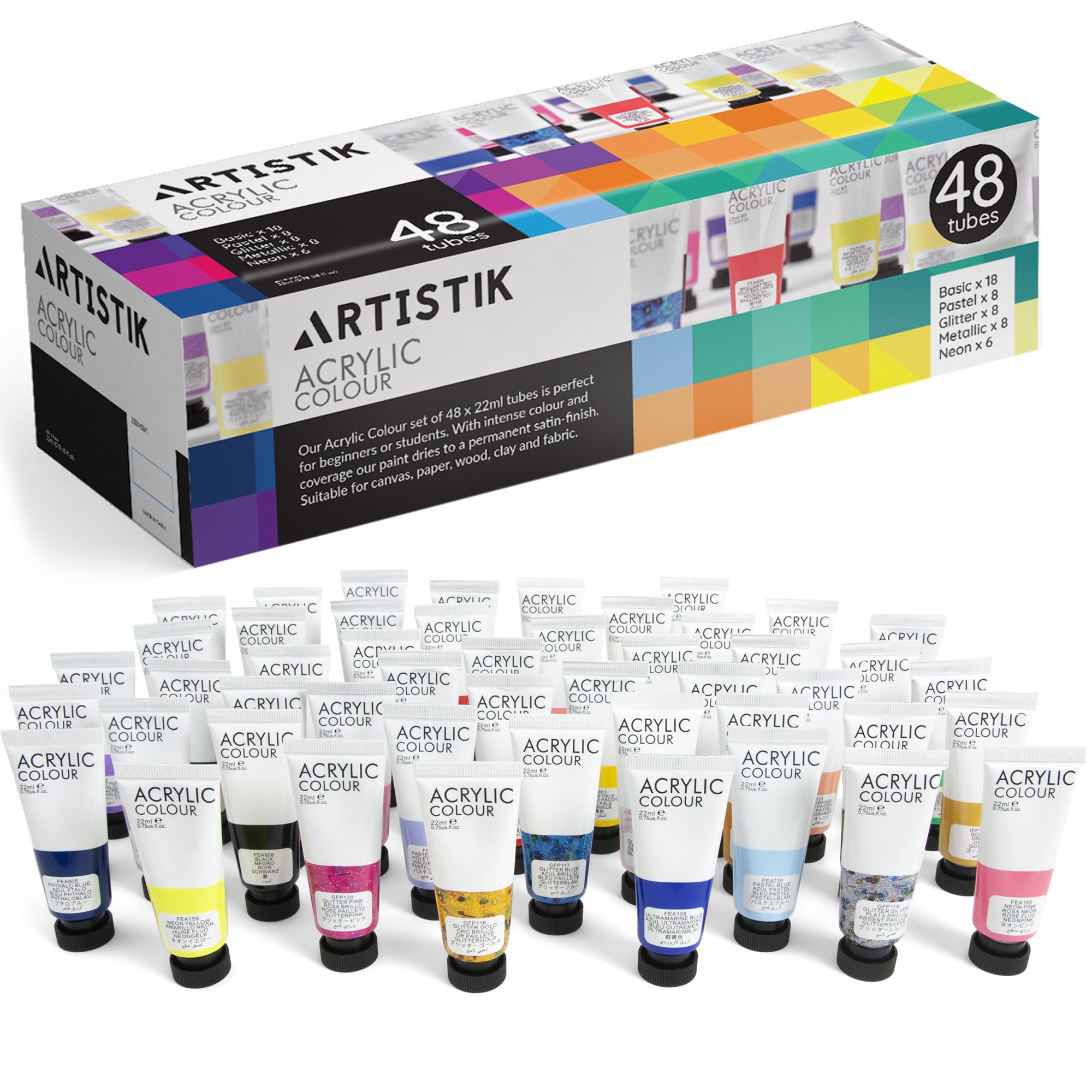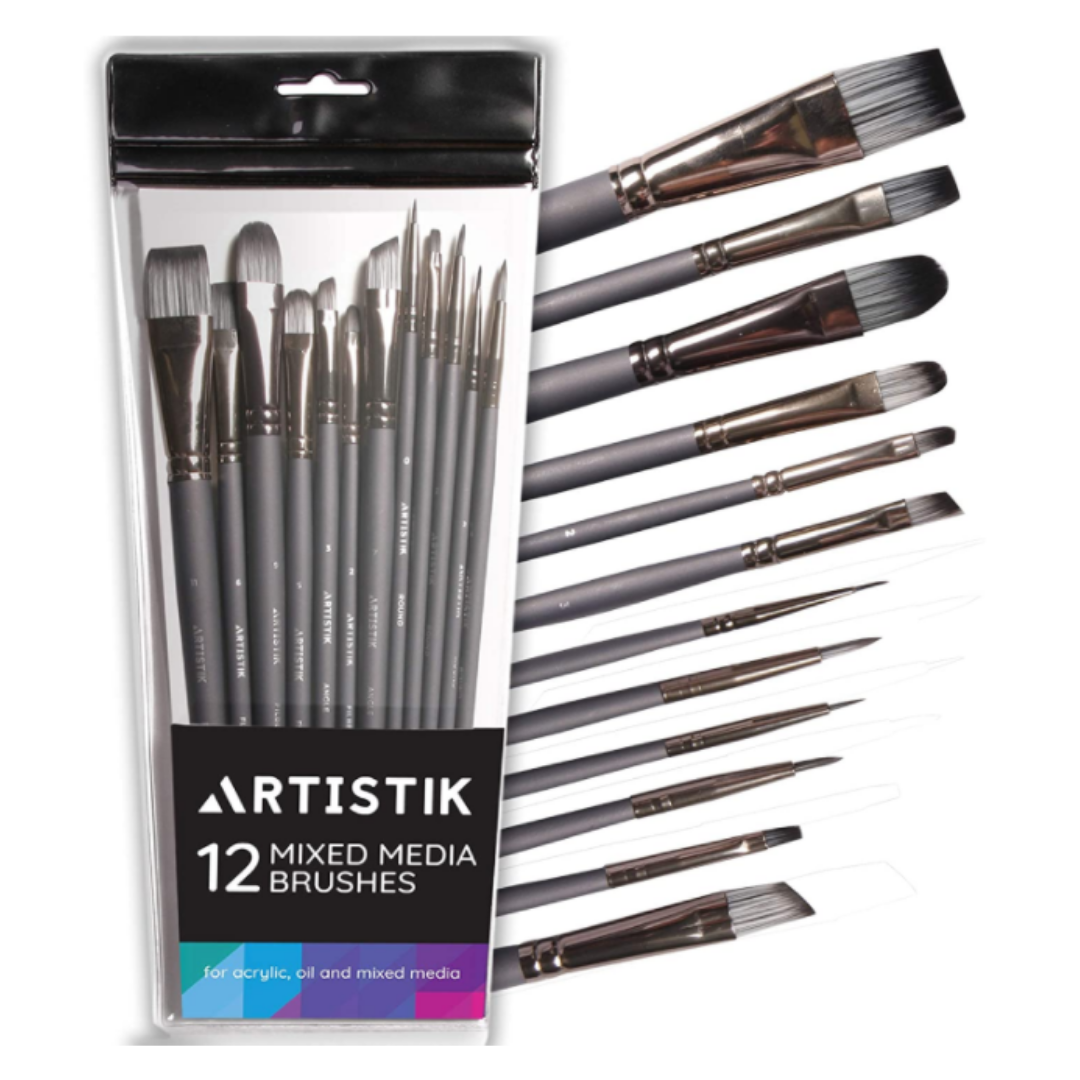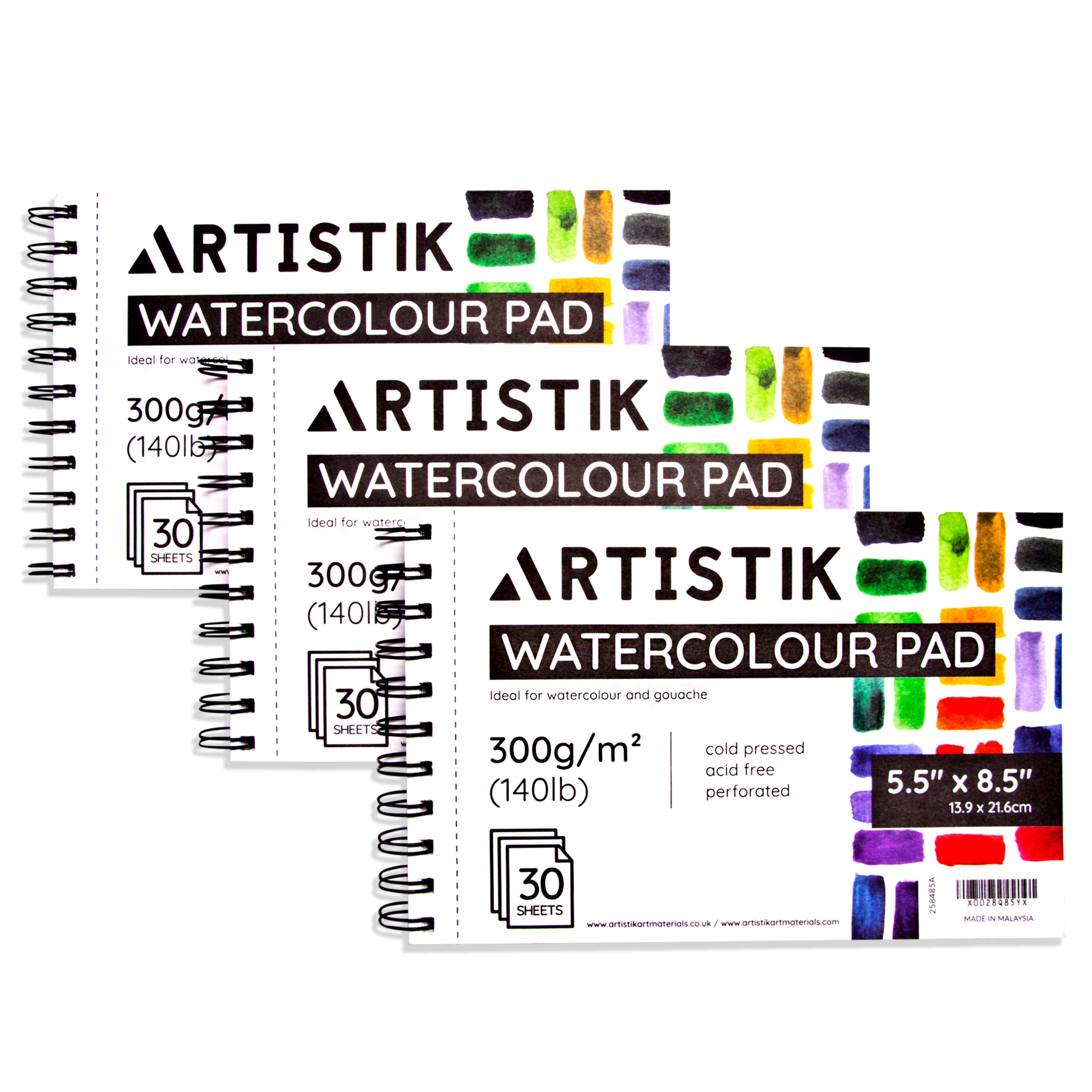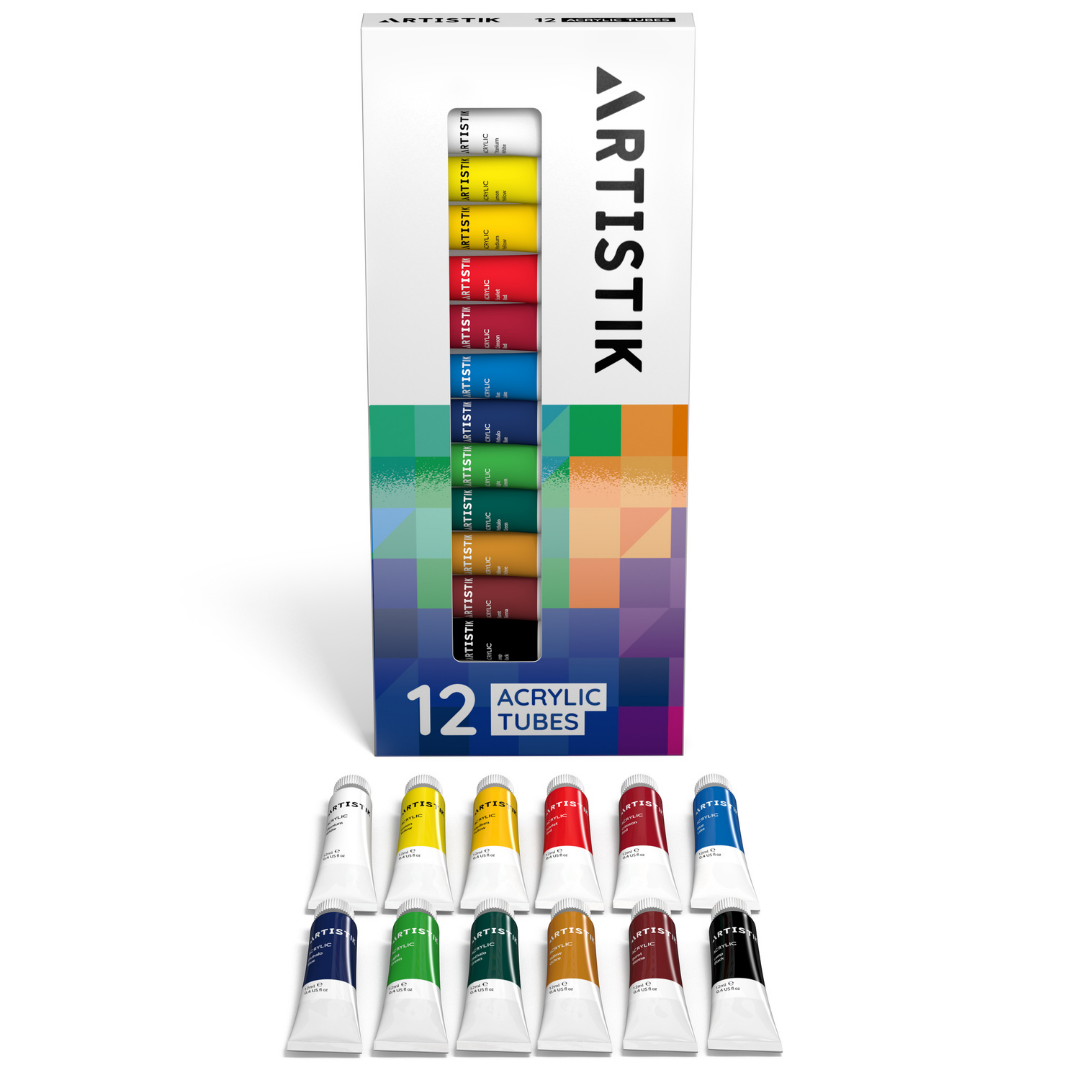Know Your Paintbrush

Choosing a brush can be difficult. With so many materials, shapes and sizes it can seem like a daunting task, and that’s before you’ve started to do the real work! Artistik wants to take all the confusion out of the brush selection process with this quick guide. Helping you enjoy your creative practice and get the most out of your art materials.
Bristles:
Traditionally made from animal hair. The most common being sable, pony, squirrel or hog bristles. Each type of hair has different properties, achieving different results.
Synthetic brush tips are made by treating polyester to make a smooth, flexible material called Taklon.
Synthetic brushes offer a cruelty free, green alternative that’s gaining popularity with many artist. Ferrule: The metallic tube that pinches the bristles to the handle. These are usually nickel plated to prevent the ferrule rusting over time and affecting your grip on the brush.
Crimp:
The end of the Ferrule that connects to the handle.
Handle:
This is usually made of wood, acrylic or a mix of both. Handles can be long or short. This makes a difference to the way an artist uses the brush.
Long handles allow you to stand further away from your work, enabling the artist to move more fluidly and expressively. Short handles are great for working close up for fine detail and controlled strokes.
Let's take it from the Top!
Brush tips
Brush tips come in a variety of shapes and sizes with each serving a unique purpose. We have listed 8 of the most common brush heads and why you might choose to use them for your project.
Round
The goldilocks of brushes! The round brush is just right with a medium thickness and a perfect pointed tip to give you great control. Perfect for outlines, details and controlled washes.
A round brush will create a line that is thin at the top, becoming wider as you press down. This makes it great for filling in smaller areas and getting into corners with ease.
Flat
The flat brush is longer than the round with a square end. This gives it two completely different strokes in one brush. When used flat or fat side down, you can cover large areas, create strong washes or shapes. If you use the thin edge you can create crisp sharp lines. When used with a one stroke technique this brush can create beautiful petals, leaves or floral shapes. Their versatility makes them a popular choice with sign painters, face paint or body artist, as well as traditional artists.
Spot or Detail
The spot brushes are made for minute details. They have a round tip, and short flexible hairs. Ideal for miniature figure painting, rock art and precision work. Add detailed flourishes and finishing touches to any piece with this spot brush.
Liner or Rigger
The long thin hairs of a Liner or Rigger brush absorb any shake of the artist’s hand, allowing you to create steady thin lines. Its extra fine point works for long stripes, scroll work and details. This brush was used to paint the long lines of the rigging of boats in maritime paintings and this is how it got its name. This brush can be used for oil, acrylic or watercolour.
You will get the best results if the paint is thin and fluid. We would recommend using a thinning medium if you use this brush with oil or acrylic.
Filbert
Similar to the Flat brush, but with an oval tip. The Filbert creates a beautiful broad mark with a soft edge. They are often used for portraits, live studies or figurative paintings because of their soft organic finish. The hairs are usually of medium length, perfect for blending and covering a larger area.
Bright
The Bright brush has short, flat hairs that curve in at the tip giving it a rounder finish.Page 10 of 16These are great for strong, short strokes and dabbing, like the post-impressionist style of painting. The short bristles are often used for making scratch-like marks for texture or creating a distressed look.
Angular
These brush fibres are cut at a slant to create an angled tip. The sharp edge can be used for detail and fine lines. The flat of the brush is sometimes used to create curved marks when pressed down. They can also be used to fill in large areas and get into corners. These brushes are excellent for straight lines, especially if you are doing a craft project. The fine point fits into small grooves and curves.
Fan
The flat bristles of the Fan brush form a semi-circular tip that can create beautiful feathered edges. It is widely used for painting in oil, acrylic and watercolour. They are made for blending and softening, or to create texture in your work.
Tips on brush care, a little goes a long way!
So you’ve done your research on selecting the correct brush, put effort into your work, whether it’s a master piece, test or fun pastime. Now it’s time to take care of your materials.
Taking care of your brushes will make a huge difference to their performance, and your pocket! There are a few simple steps you can take to ensure you get the most from your brushes. Here are some of our top tips for keeping those bristles in shape!
Rule #1 Cleaning
Depending on the type of paint you are using you may need to use specific cleaning mediums and techniques. For example, if you use oil paint, you will need to use a solvent based medium to clean your brushes. Watercolour and acrylic paint will wash away using warm soapy water. You can push the bristles into the palm of your hand, making small circles to remove the paint.
Make sure to check in between the bristles closest to the ferrule, this is important because over time, particles of paintmay get stuck inside the ferrule, separating the bristles and creating an out of shape brush.
Rinse away the soap and squeeze the fibres dry. Make sure you reshape the bristles. Lay your brush down flat to dry, this prevents moisture dripping down into the ferrule as well.
Never allow paint to dry on your brush.
Acrylics can dry quite fast and will turn into a solid mask over your bristles. This will cause the hairs to clump together and ruin their shape for good. If you are using multiple brushes for one piece of work make sure you keep each brush moist in between usage.
Dip the brush into some water and remove excess paint before you move onto the next brush. Its helpful to have a damp cloth or tissue paper on your work station to rest your brushes on between uses.
StoragePeople have a tendency to leave their brush sitting in a glass of water, with the bristles facing down. This is a big No No! the fibres will become waterlogged and bent out of shape. After your brush is clean and dry you should store it in a protective case or tube.
Artists will have their own unique way of working their brush. Over time, brushes will naturally become worn out, but with the correct care, you will extend the life of your brush, letting you experience its maximum potential for many years.











Leave a comment